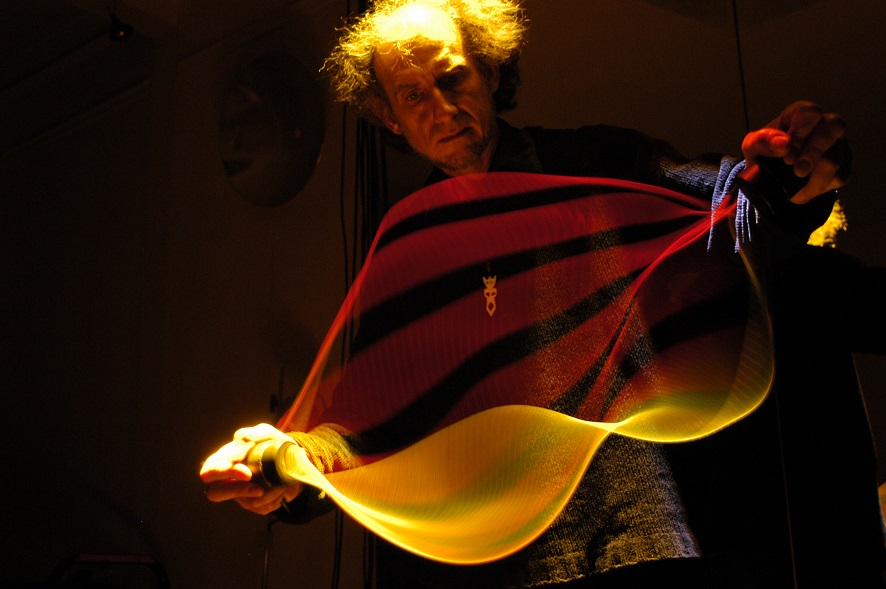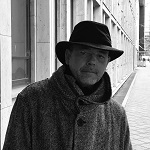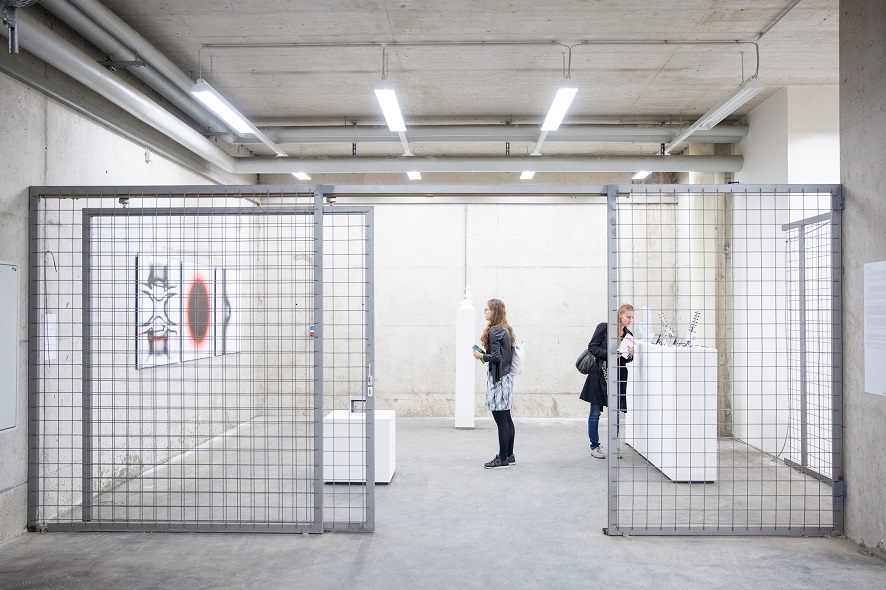What sort of difficulties does one encounter collecting and exhibiting media art? What challenges face a gallery dedicated to media art, how’s the market trending at the moment, and what’s it like to work in an area of tension and interplay between art and commerce?
It’s no easy matter to formulate answers to these questions—but Vicente Matallana is a man who does exactly that. As director of the BEEP Electronic Art Collection and founder/CEO of LaAgencia, he has years of experience with the media art market. He’ll be bringing selected works to Linz for Gallery Spaces at the Ars Electronica Festival September 6-10, 2018, and will offer insights about media art and the art market at the Media Art Market Symposium on Festival Saturday. He told us more in this interview.

Landmarks by Markus Riebe (AT) at the 2017 Gallery Spaces. Credit: Tom Mesic
You are exhibiting at this year’s Ars Electronica Festival Gallery Spaces. What’s to expect?
Vicente Matallana: The creation of the Gallery Spaces programme to include the market and collecting is a fantastic initiative on the part of Ars Electronica; when you accept the responsibility of directing a collection you have to be very aware of the fact that you are becoming the notary of an epoch, as what is systematically collected is what is preserved for future generations, for Art History.
Although, as Mark Tribe said in the 90s, we hoped to live outside the tyrannies of the market we have found that it is necessary, in order to guarantee the longevity of work done, both physical and digital. That is why collecting is an essential key in this process that Ars Electronica has wisely integrated at the right moment.

Paul Friedlander. Credit: Voravanna Tonkul
There is one work coming to Linz this fall that has been newly commissioned. How did this come about?
Vicente Matallana: The installation, ”Tycho; Test One” by Paul Friedlander is the first result of the ATA Programme (Advanced Technology Art), organised by the NewArtFoundation, Eurecat, and the Beep Electronic Art Collection with the collaboration of Escofet. A programme that has followed the routine and complications intrinsic to the concept of experimental.
That is why we are particularly happy to present “Tycho; Test One”, which implies that there will be a “Tycho; Test Two”, that is to say, we continue working to achieve that next turn of the screw that Art always needs. The second test will be presented in Barcelona in the winter of 2019. We are so happy to present “Test One” in Ars Electronica, is the essence of the experimental work in the transgression developed by Art, Science, and Technology.
What are the challenges in collecting and exhibiting media art?
Vicente Matallana: It is curious that in 1998 LaAgencia was created with a declaration of intent that still stands true today: “Its mandate is to respond to the new structural needs required by the incorporation of new technologies in art”. 20 years have passed, a generation, and we are still finding that, except for honourable exceptions, the system is thought out with a classicism in its content and technological needs that do not reflect what is really happening in Art.
That is why the first challenge is to dismantle the growing myth regarding the difficulty of conserving media art. It is a question of proximity, a proximity that is difficult to find in an art graduate without a minimum working knowledge of engineering that permits an analysis of problems in order to find solutions, generally fairly simple ones. And yes, we have engineers on the team at LaAgencia.
Media art has had a hard time gaining a foothold in the art market; do you feel like there has been an improvement or upward trend?
Vicente Matallana: We are currently in a moment of return to classicism in the art market as a result of the recent economic crisis, a logical move in any market, in the same way that that money went to the so-called refuge values such as German bonds, low return low risk; the art market, like the market it is, follows the same dynamics.
But we must keep in mind that at ARCO, with whom I have worked for the last 20 years, we were managing a specific section dedicated to media art that evolved as the media advanced, in an accelerated form, “escape velocity”, from the mid-90s. When Carlos Urroz took over the direction of ARCO we decided to eliminate the section under an idea as simple as: if after almost 15 editions with specific sections, media art had not integrated into the art market there was little more we could, or should, do.
Yes, media art is integrated into the market, with a representative presence equivalent to the quantity of media art currently created, lacking, as all, an epoch of conservationism in the market.
Find impressions of the 2017 Gallery Spaces on Flickr !
How would you like to see the media art market develop in the future? And what would be necessary to make that vision happen?
Vicente Matallana: The evolution of the market depends on the development of a strict method of cataloguing that allows for confident conservation. Obviously, this is not a painting to be hung and that’s the end of it. If you deliver a piece to a collection without the corresponding plans detailing the functioning of the piece, the components etc… then you are delivering a work of art that is captive to the artist, which is quite simply inadmissible, and when I say inadmissible I mean that in our collection such a work will get the no admission sign; the pieces must arrive with their documentation, which is revised by our technical staff before being incorporated into the collection.
It is also true that, as I said at the beginning, in the 90s we dreamed of escaping the tyrannies of the market, doing was enough, we never imagined that this would last, so preservation was never discussed. Now we have to mend our errors; bringing the collection up to date in this respect has taken two years of work and research with the Universitat Politècnica de València but now we have more than 90% of the collection perfectly catalogued. Soon we will publish the model records as an example that can be free used by any other collectors and institutions; It will be ready for the festival, I guess…
Any evolution of the market will necessarily simplify the process of guaranteeing conservation. It is not difficult and it is necessary for the prosperity of the market and so that the works created may be enjoyed by future generations.

Vicente Matallana is the director of the BEEP Electronic Art Collection, as well as the founder and director of LaAgencia, an independent new media art company created in 1998 in Madrid. LaAgencia is engaged in programs and projects focused on new media art as an alternative paradigm of research and knowledge. Matallana is also a teacher and lecturer and regularly publishes articles and sits on international juries, seminars and committees for new media art. He is professor in the new Master in Curatorial Studies at Universidad de Navarra. With Joasia Krysa, he has been the co-director of the Kunsthal Aarhus, Aarhus. He is a member of the advisory board of Kurator, as well as a member of the board of directors and treasurer of the Institute of Contemporary Art, the main art professional association of Spain.
Visitors to the 2018 Ars Electronica Festival (theme: ERROR – The Art of Imperfection) can visit Gallery Spaces September 6-10, 2018 during POSTCITY Linz’s opening hours. Vicente Matallana will also give an Art Talk at the Media Art Market Symposium on Saturday, September 9, 2018 at the OK Center for Contemporary Art.
To learn more about Ars Electronica, follow us on Facebook, Twitter, Instagram et al., subscribe to our newsletter, and check us out online at https://ars.electronica.art/news/en/.
